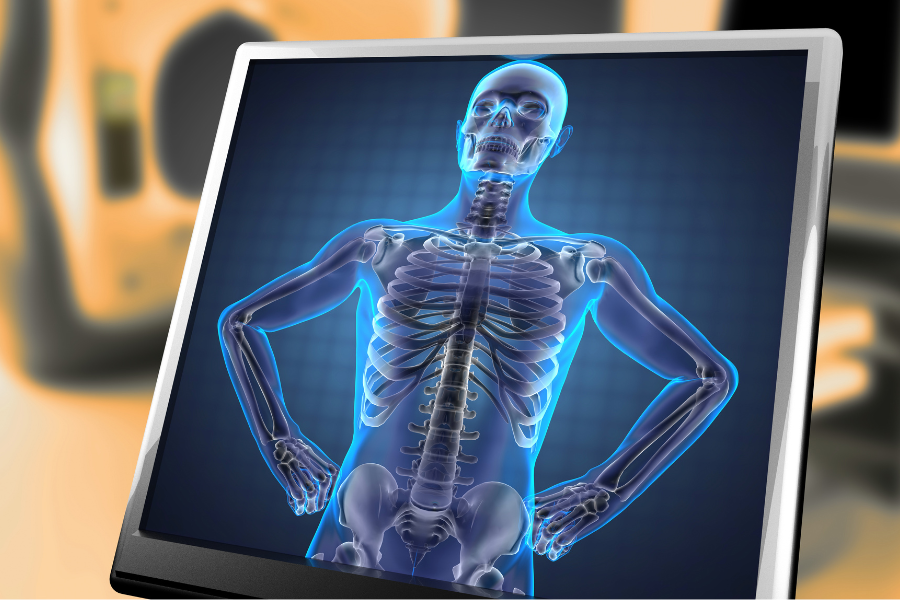Make no bones about it: calcium is crucial for your bone health. But did you know that it’s also essential for other critical functions in your body?
Why Do We Need Calcium?

99% of the calcium in your body is stored in your bones and teeth, providing structure and support. The remaining 1% is responsible for important metabolic functions like blood vessel function and nerve transmission. While the level of circulating calcium in your body remains constant regardless of your diet, your bones serve as a calcium bank to maintain these vital functions.
To ensure optimal bone health, it’s important to continuously replenish your calcium levels through your diet. Along with calcium, other nutrients like vitamin D, protein, vitamin A, and phosphorus also support bone health. Regular physical activity, such as exercise, can also help maintain bone strength and mass.
How Much Calcium Do We Need?
Insufficient calcium intake in early life can lead to osteoporosis later in life. During the ages of four to 18, active bone formation and calcium deposition are at their peak. Children aged four to eight require 1,000 mg of calcium daily, while adolescents aged nine to 18 need 1,300 mg. From the age of 18 to 50, bone mass remains relatively constant, so calcium requirements are still around 1,000 mg. However, once women reach menopause and experience a decrease in estrogen levels, they need to increase their calcium intake to 1,200 mg. Around the age of 70, men also begin to experience bone loss and require 1,200 mg of calcium.
What Are Our Best Sources of Calcium?

When it comes to dietary sources of calcium and vitamin D, dairy products like milk, cheese, and yogurt are the best options. Three eight-ounce glasses of milk can provide approximately 1,000 mg of calcium. Additionally, leafy greens like kale and turnip greens, as well as canned salmon and sardines with bones, are reasonable alternatives. Some foods are now fortified with calcium and vitamin D, such as orange juice, cereals, and soy milk. Be sure to check food labels for additional sources of calcium.
If you choose to avoid or prefer not to consume dairy products, calcium supplements are available as an option. The two main forms of calcium supplements are carbonate and citrate. Calcium carbonate is best absorbed when taken with food, while calcium citrate can be absorbed equally well with or without food. Consult the label to determine the appropriate dosage for your needs.
Take the Initiative Now!
Review your diet to ensure you’re getting enough calcium, especially if you’re avoiding dairy products or have specific dietary restrictions. Your bone health is too important to overlook, so take action now to support lifelong bone health.
Snack Tip: Yogurt Sundae

Yogurt “Sundae” This calcium-rich snack is fun and great for kids and can be made ahead. Use an 8-ounce or larger canning jar with lid or a non-breakable jar. Choose a favorite yogurt. Gather sundae toppings such as fresh or dried fruit pieces, berries (fresh or frozen), nuts, granola, cereal, and yes, chocolate chips. Spoon half of the yogurt into the jar, sprinkle with toppings, add more yogurt and toppings, leaving enough room for the jar lid.
![]()
 Written by: Mimi Cunningham, MA, RDN, CDCES
Written by: Mimi Cunningham, MA, RDN, CDCES
Mimi is a registered dietitian-nutritionist and diabetes care specialist helping people learn to manage their diabetes and achieve good health. She believes food definitely is good culinary medicine.
Discover More…
- Unlock the secret to a happier, healthier lifestyle by delving into additional captivating articles on our website at: Smart Strategies for Successful Living.
- Enjoy our uplifting and inspiring videos on our YouTube channel at: CLICK HERE.
- For more great insights on healthy eating: CLICK HERE.








